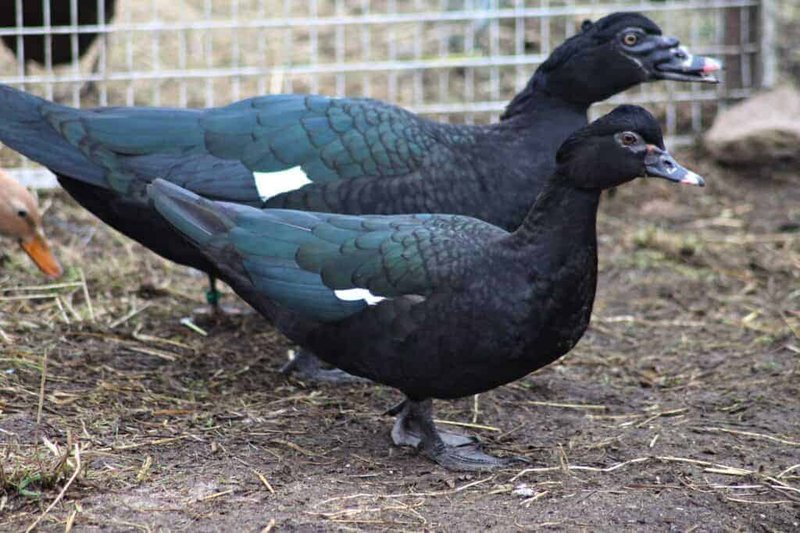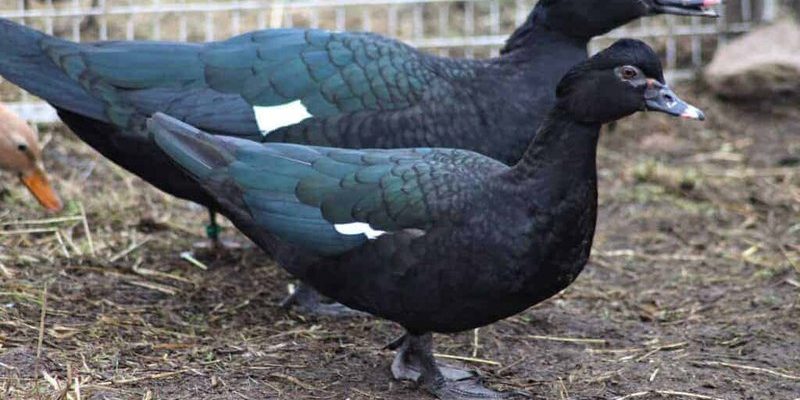
Understanding how Muscovy ducks adapt can give us insights into nature’s resilience. From urban parks to farmlands, these ducks have become quite versatile. They learn to navigate challenges, whether it’s finding food or avoiding predators. Just like we blend into different social settings, Muscovy ducks adjust to their environments in unique ways. So, grab your favorite drink, and let’s explore the remarkable adaptations of these fascinating birds.
Physical Adaptations of Muscovy Ducks
Muscovy ducks are equipped with several physical features that make them well-suited for different environments. Their strong legs and webbed feet allow them to be agile swimmers in water, while also enabling them to walk on land. These adaptations make them excellent foragers, as they can search for food both in the water and on the ground.
Another interesting feature is their feathering. Muscovy ducks have a unique combination of dense down feathers that provide insulation and lighter outer feathers that help them stay dry. You might occasionally see them fluffing up their feathers to trap air, which creates warmth during chilly days. This ability to regulate their body temperature allows them to thrive in a variety of climates, whether they’re in a warm suburban garden or a cooler rural landscape.
Interestingly, their red facial caruncles aren’t just for show. These fleshy growths are thought to play a role in attracting mates, but they also help with temperature regulation. When it’s hot, the caruncles can help to dissipate heat. This is nature’s way of ensuring that Muscovy ducks can adapt not only physically but also socially, enhancing their chances of survival.
Behavioral Adaptations
Behavior is a key factor in how Muscovy ducks adapt to their environments. One fascinating behavioral trait is their foraging strategy. Unlike other ducks that might rely solely on swimming, Muscovy ducks are excellent foragers both on land and in water. They’ll rummage through grass, mud, and even gardens to find food—think insects, small plants, and seeds. This flexibility in diet allows them to adapt to whatever food sources are available in their surroundings.
Muscovy ducks are also known for their quiet nature. Unlike their quacking cousins, they tend to be more subdued. This can be an advantage, especially in urban settings. By being less noisy, they can avoid attracting unwanted attention from predators. Instead of quacking loudly, they use soft hissing sounds to communicate, which helps them maintain a low profile.
Another interesting behavior is their tendency to form social groups. In the wild, Muscovy ducks are often found in small flocks. This social structure not only offers protection from predators but also enhances their foraging success. They can work together to find food, keeping an eye out for threats while benefiting from shared resources.
Habitat Flexibility
One of the most impressive aspects of Muscovy ducks is their habitat flexibility. They can thrive in a range of environments, from wetlands to urban parks and even agricultural fields. This adaptability is partly what has allowed them to thrive in places where other species might struggle.
In urban settings, Muscovy ducks have learned to utilize human-provided resources. You might see them scavenging for food scraps in parks or around picnic areas. Their ability to exploit these opportunities showcases their ingenuity. They’ve become quite popular with park-goers who enjoy feeding them, which adds to their adaptability in human-influenced habitats.
Additionally, Muscovy ducks can make nests in various locations, depending on their surroundings. They often nest in thick foliage or along the banks of low-lying water sources. This choice of nesting sites not only offers a safe space for their young but allows them to take advantage of whatever environment they find themselves in.
Climate Adaptations
When it comes to climate, Muscovy ducks are tough little creatures. They have a remarkable ability to handle different weather conditions, thanks to their insulating feathers. In colder climates, their thick down feathers keep them warm, while in hotter areas, they can regulate their body temperature effectively.
Muscovy ducks also exhibit seasonal behaviors as a response to changing climates. For example, during the winter months, they’ll often migrate to areas with more temperate weather, seeking out warmer climates. This migration behavior is not as pronounced as in some other duck species, but it still highlights their ability to adapt to seasonal changes.
During hotter months, you might spot them seeking shade or taking dips in water bodies to cool off. Their adaptability to varying temperatures is a key survival strategy, helping them thrive in different conditions and ensuring they remain healthy year-round.
Challenges and Survival Strategies
Like all animals, Muscovy ducks face challenges in their environments. Predation is a constant threat, especially from animals like foxes, raccoons, and birds of prey. However, they use their smarts to avoid danger. They often nest in hidden areas, utilizing their camouflage to stay out of sight.
Moreover, Muscovy ducks are also relatively wary. They have good eyesight and can spot potential threats from a distance, giving them a chance to escape before danger is near. Their social behavior makes them even safer; when one duck spots a predator, the others can react quickly, moving together to evade it.
Another challenge they face is human activity. As urban areas expand, their natural habitats can be threatened. But Muscovy ducks are resourceful; they adapt to urban life by nesting in parks or even gardens. They find food from trash and food scraps, illustrating just how resilient they can be.
Social Structure and Reproduction
Muscovy ducks have interesting social structures that also play a role in their adaptability. They are often seen in small groups, which helps them thrive. Being social animals, they offer each other protection and support, especially when raising young.
When it comes to reproduction, Muscovy ducks typically form monogamous pairs during the breeding season. This strong bond not only helps in parenting but also in ensuring that they can effectively rear their ducklings. The mother duck will lead the young to water soon after they hatch, teaching them to swim and forage.
Interestingly, they are also prolific breeders. A single female can lay anywhere from 8 to 20 eggs in a nesting season, depending on environmental conditions. This high reproductive rate allows them to maintain their population even in the face of challenges, demonstrating yet another way they adapt to their surroundings.
The Importance of Conservation
While Muscovy ducks are adaptable and resilient, they still face threats that could impact their populations. Habitat loss, pollution, and hunting pressure can put a strain on their numbers. As we marvel at their adaptability, it’s crucial to consider how we can support their survival by preserving their natural habitats.
Conservation efforts play a vital role in ensuring that Muscovy ducks continue to thrive. This can include creating more green spaces in urban environments, ensuring clean water sources, and educating the public about the importance of these unique birds. By taking action and being mindful of their environments, we can help Muscovy ducks adapt and flourish for years to come.
In Conclusion
Muscovy ducks are fascinating examples of adaptability in nature. From their physical traits to their behaviors and social structures, these ducks showcase how resilience and versatility can lead to success in a variety of environments. By learning about their adaptations, we gain a better appreciation for these amazing birds and the importance of supporting their habitats. So, the next time you see a Muscovy duck, remember the incredible journey it undertook to thrive in its environment, and perhaps think about how we, too, can adapt and coexist with our natural world.

